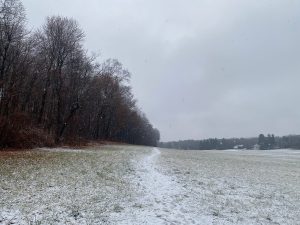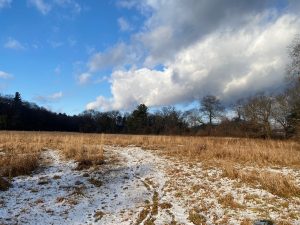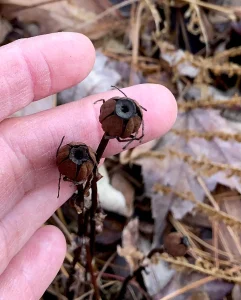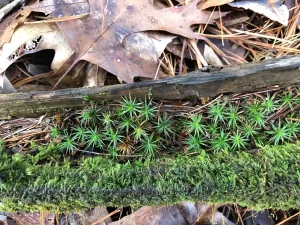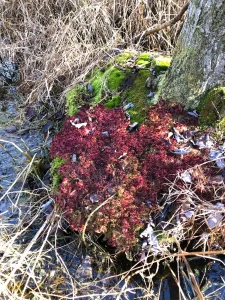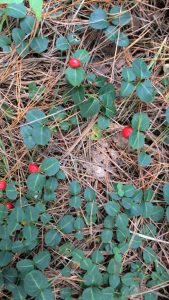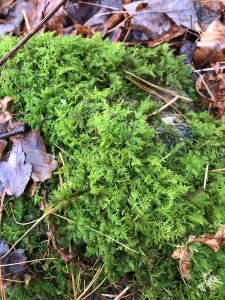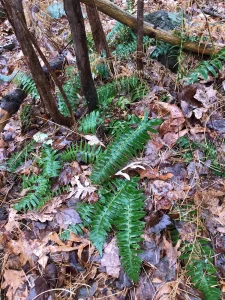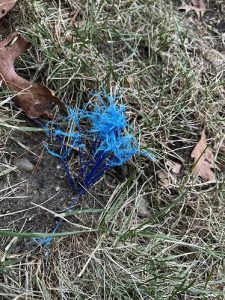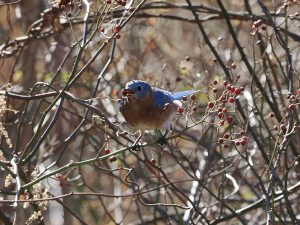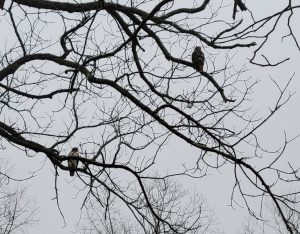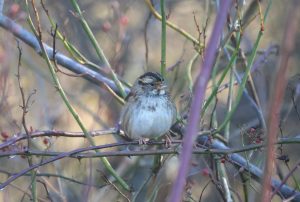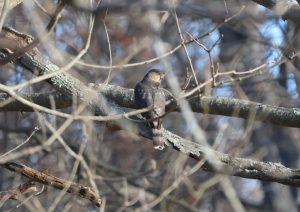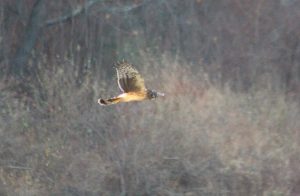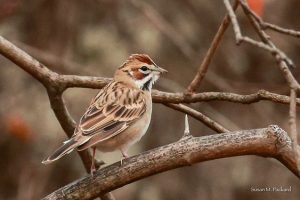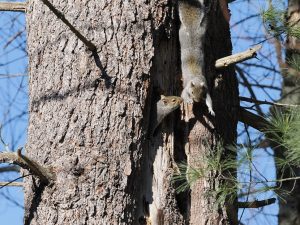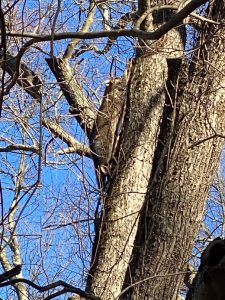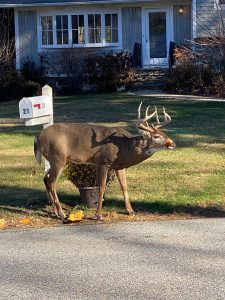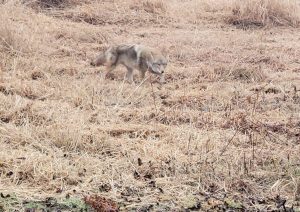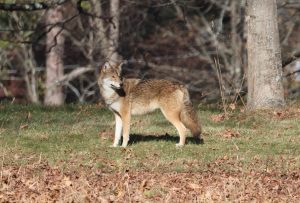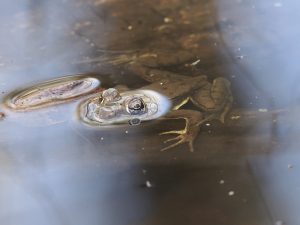Written by Gwyn Loud for the Lincoln Land Conservation Trust. She welcomes your sightings and questions at 781-259-8690 or gwynloud555@gmail.com
Winter will begin officially on December 21, the winter solstice, an event marked since ancient times to welcome the return of the light. The times of sunset for us are actually already slowly getting later, starting on December 16. We are probably all cheered by lengthening hours of daylight, but the dark has its value too; birds such as owls use darkness as times to hunt and many mammals find safety and protection in the dark. For myself, there is nothing more calming than stepping outside late in the evening to look up at the wonders of the starry sky. Lincoln’s Dark Skies Committee is now a sub-committee of the Planning Board and, hopefully, we can minimize light pollution at night for the benefit of nocturnal ecosystems as well as humans.
The weather has fluctuated over the last month, with temperatures sometimes below average into the twenties, and sometimes above, even up to 61℉ on December 11. Of greatest concern is that most of the Commonwealth, including the Northeast, remains in “Critical Drought” status. Since August, we are 8- 11 inches below average in precipitation and many stream beds and ponds remain low. Rain over Thanksgiving and again recently has helped, but more is needed. We have just had a dusting of snow a couple of nights, painting a beautiful white landscape for a few hours the next day. A blanket of snow would be welcome to provide insulating warmth for plants, and contribute to the groundwater supply.
This is a season when we may notice of aspects of the plant world which often get overlooked in the vibrant and colorful growing seasons. Winter weeds have their own beauty of shapes and sizes in a wide array of soft browns. In the woods, mosses, lichens, and fungi draw our attention, as well as plants such as partridgeberry and Christmas Fern which stay green all winter. Carol Roede photographed the upright seed capsules of ghost pipes, which are much more evident when they are white in warmer months. and Barbara O’Neil came across a very unusual turquoise fungus, a type of Chlorociboria.
Birds are busy at feeders, as well as benefitting from natural food in the form of seeds and berries. The usual winter visitors such as dark-eyed juncos and white-throated sparrows are regulars and I am happy to have four bluebirds enjoying suet and dried mealworms. All the birds come to the heated birdbath to drink or bathe. A Cooper’s Hawk swoops through on many days, and a pile of mourning dove feathers was recent evidence of the hawk’s meal. Birds sometimes hit glass windows, which may just stun the bird but can also result in death. I was sad to find a dead red-bellied woodpecker below one of my windows and I found a dead mockingbird outside below a glass door at the DeCordova Cafe. One can easily put various decals on windows to prevent bird strikes; look online or visit the store at Drumlin Farm to find deterrents.
On Sunday December 29 the Christmas Bird Count (CBC) will take place in Lincoln, part of National Audubon’s annual census of birds across North America. Lincoln is included in the “Concord Circle”, which Norman Levey coordinates. We have birding teams lined up to go out in the field but we could use more counters at feeders; please contact me if you are interested in participating.
Birders have been delighted to see several “good birds” at Drumlin Farm recently. These sightings include two unusual species, a lapland longspur and a lark sparrow, the latter hanging around for at least ten days and only reported once before, back in 2018. A horned lark, snow bunting, Northern harrier, and several pine siskins, purple finches, fox sparrows, field sparrows, and yellow-bellied sapsuckers were other birds of note. Elsewhere in town, observers reported flocks of robins, at least a dozen mute swans and “a platoon of mallards” on Farrar Pond, rusty blackbirds in the Rando Swamp, two Virginia rails calling from the marsh near the Food Project fields, and great-horned owls calling. Rafts of ducks of various species and a great blue heron have been have been seen near the Trapelo Rd. crossing of the Cambridge Reservoir, where the water is very low.
Conservation Ranger/ Land Steward Will Leona wrote, “This past month has been filled with red-tailed hawks following the tractor as we mowed the fields before winter. I have seen so many examples of buck rubs on smaller trees all around town. Flint’s Pond has been filled with many migrating birds. Just last week I saw a raft of ducks including hooded mergansers, common mergansers, buffleheads, and mallards all together. A few days ago, I… photographed a great horned owl hunting at sunset on Smith-Andover field. Perhaps the sound of the tractor also signified a dinner bell for the GHO, so it made an earlier than usual dinner reservation. We’ve been seeing a kestrel frequent there as well. I have also been seeing an abundance of chunky coyotes fattening up before winter.”
“Nice News” arrives daily in my inbox (much-needed these days) and a recent article featured animals which thrive in the cold. Weasels were on the list. Our local weasels are the short-tailed and long tailed; when the short-tailed’s coat turns white in the winter it is known as an ermine. Weasels are very slender and can squeeze into small spaces (such as our chicken coop, years back). “Weasels are primarily nocturnal, feeding on prey such as voles, mice, and chipmunks.. While the weasel’s shape contributes to its hunting prowess, it also causes the animal to lose heat more quickly than a more rotund creature. To compensate, the ermine has a high metabolic rate and must eat one-third to one-half of its body weight a day, making it perpetually hungry. For this reason, ermines are active even in the coldest weather. Weasels hunt primarily by scent, zig-zagging back and forth, investigating every hole and cranny.”
Another of our common mammals, the gray squirrel, is very active all winter. In the warmer months they take shelter in leafy nests called dreys, but the dreys are not sufficient for winter’s cold. At this season, gray squirrels find protection in tree cavities and line the holes with soft leaves.
It is there that the first litter of young will be born in March or April. On a winter day I have walked past one of our big locust trees and heard squirrels “talking” from inside the trunk!
White-tailed deer, ever-present, often bed down in protected places such as thickets or under conifers to stay warmer and out of the wind. Their bodies also adapt to the cold, with a layer of fat beneath the fur, and a winter coat of thick insulating fur with hollow hairs which trap the air.
A unusual sighting in my neighborhood was of four bobcats together, probably a family group. Carol Roede’s trail cam captured one viewing (just four pairs of eyes glowing the dark) but another neighbor, also living by Valley Brook, which flows under Conant Rd. to Valley Pond saw what must have been the same foursome a few days earlier.
A green frog was spotted recently peeking above the water’s surface in a swamp. At this time green frogs and bullfrogs are brumating, which means their metabolic rate slows down and they spend a lot of time near the bottom of ponds. However, they can still move around, even under ice, and may emerge during mild spells in the winter. Wood frogs, gray tree frogs, and spring papers, on the other hand, do not go down into water but find places to hide such as under leaf litter, logs, or rocks. They can withstand temperatures well below freezing, thanks to glycerol in their blood, which serves as an antifreeze.
As this is my final wildlife column of 2024 I would like to take the opportunity to thank my “official team” of wildlife observers: Mathias Bitter, Ryan Brown, Stacy Carter, Vin Durso, Marcia Gagney, Michele Grzenda, Nancy Hammond, Sue Klem, Jane Layton, Will Leona, Norman Levey, Kathleen Lomatoski, Ron McAdow, Ellen Meadors, Corey Nimmer, Tia Pinney, Carol Roede, Nancy Soulette, Pam Sowizral, Rob Todd, Fred Winchell, and Robin Wilkerson. I am also grateful for the calls and e-mails from other observant townspeople who appreciate the many forms of wildlife around us. Thanks go as well to Miranda Loud for proofreading and to Bryn Gingrich who puts the column on the LLCT website, along with photos. I wish all readers a happy holiday season, with ongoing enjoyment of the natural wonders around us in 2025.
Links
To read about the drought in Mass.
To read more about weasels
To see Carol Roede’s trail cam video of a bobcat
To see Carol Roede’s trail cam video of a weasel


